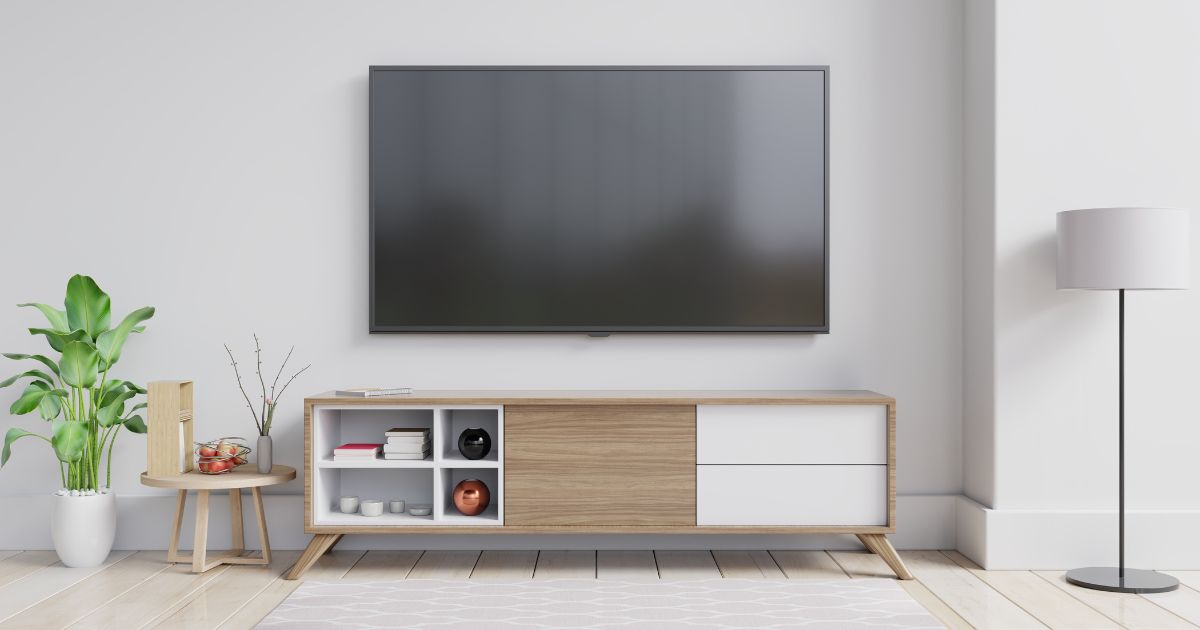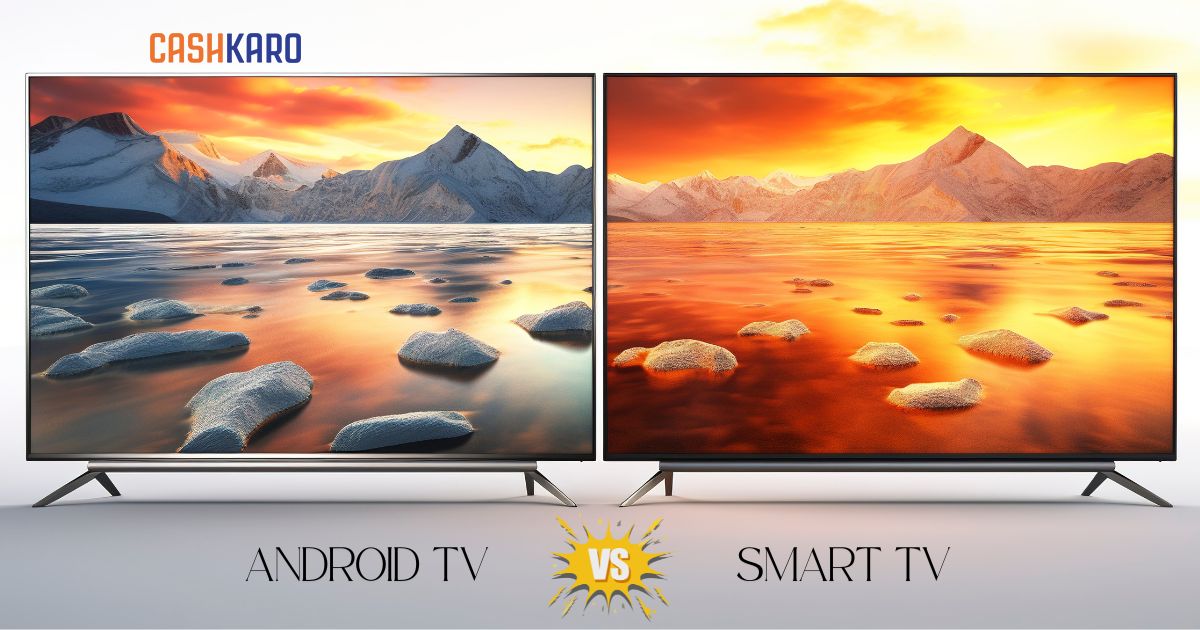Thinking of buying a new TV but confused between LCD and LED? You’re not alone.
While LCD TVs were once the top choice for Indian households, technology has evolved, and today, LED TVs have become the standard thanks to better performance, slim designs, and energy efficiency.
In this blog, we’ll explain the key differences between LCD TV vs LED TV, cover how each works, and help you understand why LED TVs dominate today’s market. By the end of this guide, you’ll have a clear understanding and the confidence to choose the right TV for your needs.
Let’s dive in and settle the debate once and for all!
What is an LCD TV?

An LCD TV (Liquid Crystal Display Television) was a major innovation when it first replaced bulky CRT TVs. It uses liquid crystals and a fluorescent backlight (CCFL) to display images.
Such TVs are a slimmer, lighter, and more energy-efficient alternative to bulky CRT (Cathode Ray Tube) TVs. While LCD TVs were widely popular a decade ago, today they are largely considered outdated and have been replaced by more advanced LED TVs in almost every price range.
How Does an LCD TV Work?
At the heart of an LCD TV is a liquid crystal panel. When electricity passes through the crystals, they align, allowing light to pass through and create images on the screen. However, they cannot produce light on their own; they can only control how light passes through them. That’s why LCD TVs need a backlight to illuminate the screen.
There are fluorescent lamps, known as CCFLs (Cold Cathode Fluorescent Lamps), behind the liquid crystal layer, which act like tiny shutters, opening and closing to allow just the right amount of light through, forming the pictures you see. These add red, green, and blue colours to the light, forming millions of colour combinations for realistic visuals.
In short: LCD TV = LCD panel + CCFL backlight
Key Components of an LCD TV:
| Component | Function |
| CCFL Backlight | Provides the white light source for the screen |
| Liquid Crystal Panel | Controls how much light passes through each pixel |
| Colour Filters | Add colour to the light to create colourful images |
| Electronic Controller | Manages signals for picture and sound |
Features of LCD TVs:
- Slim and Lightweight: One of the biggest advantages of LCD TVs is how slim and lightweight they are. They are flat and sleek, making them perfect for wall mounting.
- Good Picture Quality: They are known for producing bright images with decent sharpness. They work particularly well in well-lit rooms where sunlight or room lights might otherwise wash out the picture on older TV types.
- Energy Efficient: Compared to CRTs and even some plasma TVs, LCD TVs consume significantly less electricity.
- Budget-Friendly: LCD TVs are usually more affordable compared to LED, OLED, or QLED TVs.
- Wide Range of Sizes and Models: From compact 24-inch screens for bedrooms to large 55-inch models for living rooms, LCD TVs come in a wide range of sizes, brands, and price points.
| 🔥 Advantages | ⚡ Limitations |
| Lower Cost – Affordable compared to LED and OLED TVs. | Lower Brightness and Contrast – Blacks may look more greyish. |
| Decent Performance – Good enough for everyday viewing. | Limited Viewing Angles – The picture can fade from the sides. |
| Good Lifespan – Can last for many years with proper care. | Not Ideal for Dark Rooms – Works better in bright settings. |
| Less Eye Strain – Gentle on eyes during longer viewing. |
Who Should Buy an LCD TV?
- A budget shopper who finds older stock models at heavy discounts.
- Someone needs a basic secondary TV for occasional use.
Note: However, today, most users are better off buying an LED TV even at entry-level prices.
What is an LED TV?

An LED TV (Light Emitting Diode TV) is a modern, advanced version of LCD technology. Instead of using older fluorescent lights, LED TVs use energy-efficient, bright LEDs for backlighting, resulting in sharper images, better colour vibrancy, and ultra-slim designs. This upgrade leads to better picture quality, slimmer designs, and higher energy efficiency, making LED TVs the most common choice in modern homes.
Today, almost every “new TV” you find in stores is an LED TV, offering excellent options for all types of users, from budget buyers to premium 4K and Smart TV seekers.
How Does an LED TV Work?
At the core, LED TVs still use a liquid crystal panel just like LCD TVs. The crystals control how light passes through each pixel to create images. However, the source of the light is different.
Instead of CCFLs, multiple LEDs are placed behind or around the screen to illuminate it. These LEDs can be placed either directly behind the screen (Direct LED) or around the edges (Edge-Lit LED). This type of backlighting provides better brightness control, more vivid colours, and in some cases, thinner designs compared to traditional LCD TVs.
In short: LED TV = LCD panel + LED backlight
Key Components of an LED TV:
| Component | Function |
| LED Backlight | Provides a more efficient and precise light source |
| Liquid Crystal Panel | Controls the amount of light passing through each pixel |
| Colour Filters | Add colour to the white light to form colourful images |
| Electronic Controller | Manages signals for picture and sound |
Features of LED TVs:
- Slim and Stylish Design: LED TVs are typically slimmer and lighter than CCFL-based LCD TVs. Their sleek profile looks modern and fits easily into any room decor.
- Enhanced Brightness: LEDs offer better control over brightness and darkness, delivering sharper contrast, deeper blacks, and brighter whites to make your viewing experience more dynamic.
- Energy Efficiency: Such TVs consume less power, helping you save on electricity bills while being environmentally friendly.
- Better Colour Accuracy: With more precise lighting control, LED TVs deliver richer and more vibrant colours. This makes movies, sports, and games look more lively.
- Available in Smart Versions: Most modern Smart TVs you see today with internet, apps, and streaming options are based on LED technology.
| 🔥 Advantages | ⚡ Limitations |
| Longer Lifespan – LEDs generally last longer with minimal upkeep. | Slightly Higher Cost – More expensive than basic LCD TVs. |
| Cooler Operation – Produces less heat compared to older backlight technologies. | Limited Viewing Angles – Pictures may lose sharpness from extreme side angles. |
| Eco-Friendly Lighting – LEDs are free from mercury and other toxic materials. | Possible Light Bleeding – Edge-lit models may have uneven brightness around edges. |
| Faster Startup Time – LED TVs power on quickly without warm-up delays. |
Who Should Buy an LCD TV?
- Modern Home Buyers who are looking for sleek, stylish TVs.
- Energy-Conscious Users who prefer TVs that save electricity without compromising on performance.
- Smart TV Users who want built-in Wi-Fi, streaming apps like Netflix, YouTube, and voice assistants.
Top Recommendations:
| Product | Features | |
| Sony 65” BRAVIA 7 Smart Mini LED Google TV | – 4K Mini LED Display with XR Backlight MasterDrive – XR Cognitive Processor for lifelike visuals – 120Hz Refresh Rate with XR Motion Clarity – 40W Acoustic Multi-Audio with Dolby Atmos and DTS:X – Bravia Cam compatibility for gesture control and smart optimisation | Buy Now |
| TCL 40” Full HD Smart Android LED TV | – Full HD (1920 × 1080) Resolution with HDR10 – Metallic Bezel-Less Design for wider viewing experience – 64-bit Quad-Core Processor with G31MP2 GPU – AiPQ Engine for better colour optimisation and clarity – Bluetooth 5.0 and Chromecast Built-In | Buy Now |
| LG 32LM563BPTC HD Ready Smart LED TV | – HD Ready (1366 × 768) Resolution with Active HDR – DTS Virtual:X for multidimensional surround sound – WebOS Smart TV with Home Dashboard and Screen Mirroring – Multitasking: Surf the internet and watch TV simultaneously – Quad Core Processor for sharper and vivid image upscaling | Buy Now |
| Samsung 32” Wondertainment HD Ready LED Smart TV | – HD Ready Display with HDR and PurColor Technology – Micro Dimming Pro for enhanced contrast and deeper blacks – Dolby Digital Plus with 20W powerful sound output – Samsung TV Plus with free live streaming channels – Ultra Clean View for clearer, less distorted images | Buy Now |
| Redmi 32” F Series HD Ready Smart LED Fire TV | – Fire TV OS 7 with 12,000+ Apps Support – DTH Set-Top Box and OTT Integration on Home Screen – Dual Band Wi-Fi (2.4GHz/5GHz) and Bluetooth 5.0 – Metal Bezel-Less Display with Vivid Picture Engine – Quad-Core ARM Cortex-A35 Processor with 1GB RAM + 8GB Storage | Buy Now |
LCD TV vs LED TV: Quick Comparison

Key Differences Between LCD TVs and LED TVs
While LCD and LED TVs might look similar from the outside, the real difference lies in how they produce images using light. Here are the key differences that you must know to make the right choice.
Backlighting Technology
- LCD TVs: They use CCFL (Cold Cathode Fluorescent Lamps) as a backlight. These fluorescent tubes are placed behind the screen and stay on the entire time the TV is in use.
- LED TVs: Such TVs use LED (Light Emitting Diodes) as the light source. These can be placed behind the screen (direct-lit) or around the edges (edge-lit), allowing for more flexible designs and better brightness control.
Picture Quality
- LCD TVs: They offer decent visuals but can struggle with contrast, especially in dark scenes. Blacks often look greyish.
- LED TVs: Produce sharper images, deeper blacks, and brighter whites, giving a more dynamic and immersive viewing experience.
Design and Thickness
- LCD TVs: Due to bulkier CCFL tubes, LCD TVs are thicker and heavier.
- LED TVs: Their compact LED lights make them slimmer and lighter.
Energy Efficiency
- LCD TVs: Fluorescent backlighting in these TVs stays lit all the time, which makes them consume more power.
- LED TVs: They are up to 30–40% more energy-efficient, especially in models with automatic brightness adjustment.
Colour Reproduction
- LCD TVs: Colours are decent but not as vivid. Struggles with brightness in well-lit rooms.
- LED TVs: More vibrant and better suited for bright rooms. Some LED TVs (like QLED or Mini-LED) offer rich colour depth.
Lifespan and Durability
- LCD TVs: May have a shorter lifespan, especially with older backlight technology.
- LED TVs: Generally last longer, and many models have automatic dimming features that extend screen life.
Price
- LCD TVs: Lower upfront cost, often found in older or budget-friendly models.
- LED TVs: Slightly more expensive, but the price gap has reduced significantly. Offers better long-term value.
Which One Should You Buy: LCD TV or LED TV?
If you’re still confused between LCD and LED TVs, then take a moment and answer the given questions. Based on your answers, you’ll know exactly which TV you should buy!
1. What is your budget?
- If you want the cheapest option available: ➡️ Buy an LCD TV (if available)
- If you’re ready to spend a little more for better quality: ➡️ Buy an LED TV
2. How important is picture quality for you?
- If basic picture quality is acceptable for occasional use: ➡️ LCD TV could work, though options are limited.
- If you want sharp images, vibrant colours, and deeper blacks: ➡️ Go for an LED TV
3. Where will you place the TV?
- If it’s for a small room or you’re taking it as a secondary TV: ➡️ LCD TV is enough
- If it’s for your main living room or bedroom: ➡️ LED TV is a better choice
4. Will you watch TV mostly during the day in a bright room?
- If you don’t mind average brightness: ➡️ LCD TV can manage (but will struggle in sunlight)
- If yes, and you want excellent brightness and clarity: ➡️ LED TV is ideal
5. How important is saving on electricity bills?
- If you’re not too worried about energy consumption: ➡️ LCD TV is okay
- If you want better energy efficiency and lower long-term running costs: ➡️ Pick an LED TV
6. Are you planning to use this TV for the next 5–7 years?
- If no, you just need a basic TV for short-term use: ➡️ LCD TV could serve temporarily
- If yes, you want a durable, future-proof investment: ➡️ LED TV is the smarter buy
Note: While LCD TVs were a good option in the past, today LED TVs dominate the market thanks to their superior technology, better visuals, energy efficiency, and future-readiness.
Final Words
LCD TV vs LED TV — Which One Wins?
Well, choosing between an LCD TV and an LED TV ultimately comes down to what you value most – budget or performance.
While LCD TVs played an important role in the evolution of televisions, their time has passed. Today, LED TVs are the mainstream choice, offering better performance, energy savings, modern designs, and smart features at affordable prices.
If you’re buying a new TV today, an LED TV is the best and most future-ready option — whether you need a budget model, a 4K Smart TV, or a premium large-screen experience.
Choose wisely, and enjoy endless hours of high-quality binge-watching!
Frequently Asked Questions (FAQs)
Which is better: LED or LCD TV?
An LED TV is generally better than an LCD TV. It offers brighter images, deeper blacks, lower energy consumption, and a slimmer design. However, they are slightly expensive.
Which TV lasts longer, LED or LCD?
LED TVs typically last longer than LCD TVs. Due to their efficient lighting and advanced technology, they can last 7–10 years or more with proper care.
Is LED or LCD better for your eyes?
LED TVs are better for your eyes, especially modern ones with features like low blue light mode and automatic brightness adjustment.
Why is LCD cheaper than LED?
LCD TVs are cheaper because they use older CCFL backlight technology, which is less energy-efficient and offers lower picture quality compared to LEDs.
Is LCD or OLED better?
OLED TVS are much better than LCD TVS in terms of picture quality, colour accuracy, deeper blacks, and viewing angles. However, OLED TVs are also more expensive and are considered a premium upgrade over both LCD and LED TVs.




